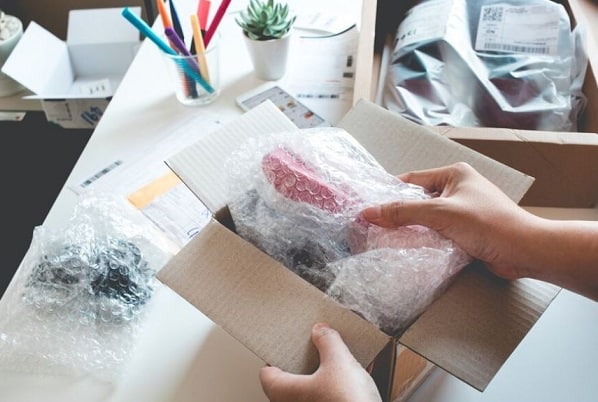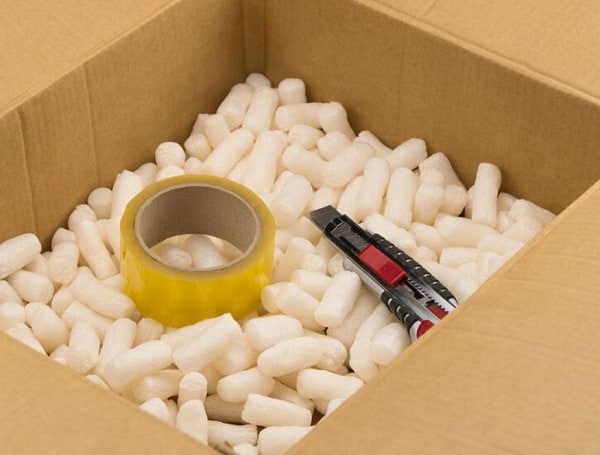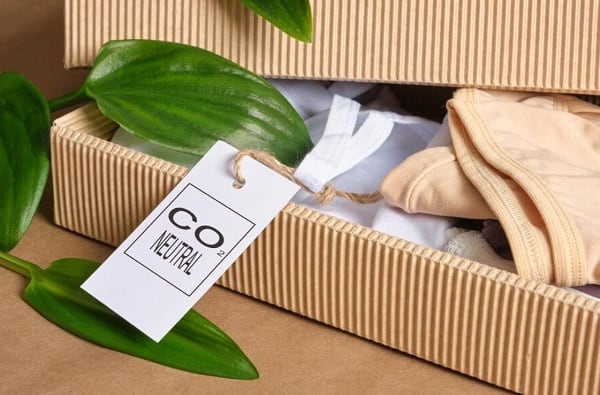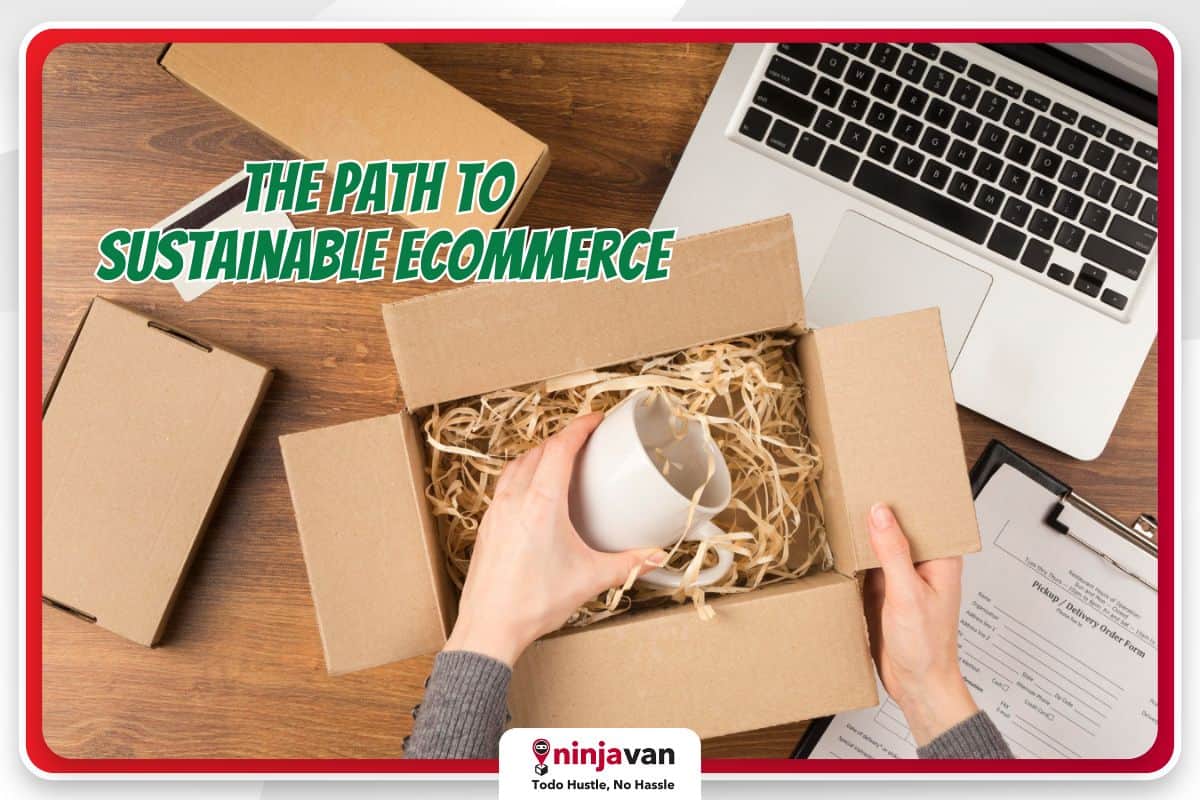Online selling has revolutionized retail, offering convenience and accessibility. However, we can’t overlook its impact on global waste increase.
One significant factor contributing to waste is excessive packaging. Products are often packaged in layers of plastic, bubble wrap and cardboard to ensure safe delivery. While this safeguards items during transit, it generates substantial packaging waste that frequently ends up in landfills.
Some eco-conscious sellers try to minimize their waste by using eco-friendly packaging, or encouraging their customers to reuse packaging materials they receive.
But the bigger challenge remains: to strike a balance between the convenience of online shopping and reducing its environmental impact to minimize waste.
Also read: Be An Eco-friendly Online Business in Small Steps
What are the types of packaging waste in ecommerce?
Packaging waste generated from ecommerce usually involves traditional packaging types. They include:

1. Excess box packaging
Overboxing means the items are placed in boxes much larger than necessary, and often padded with excessive filler material like bubble wrap or air pillows. This practice contributes to unnecessary waste.
This is usually done to accommodate standardized shipping methods or to maintain the brand’s image.
2. Plastic wrapping and cushioning
To protect items during transit, plastic wraps, bubble wraps and air cushions are extensively used. While they help protect the products, they contribute significantly to plastic packaging waste.
3. Disposable fillers and inserts
Styrofoam peanuts, foam inserts and plastic sleeves used to protect items within the box are non-biodegradable and add to the waste stream.

or compostable pillows instead.
4. Polybags and envelopes
Lightweight items are often shipped in plastic polybags or padded envelopes. These materials are usually not recyclable and end up in landfills.
5. Promotional and branding materials
Marketing collaterals like inserts, flyers and freebies included in packages contribute to paper waste. While these items aim for more customer awareness and engagement, they often end up discarded.
6. Return packaging
For items that are returned, additional packaging waste is generated. Sometimes, return packaging is discarded or damaged in a way that makes it unfit for reuse.
Check out these Top RTS Reasons and How to Avoid Them.
#NinjaTip: Sa Ninja Van, walang RTS fee for life! Get door-to-door return of your RTS parcels for free and with validated RTS reports to avoid discrepancies. Get this perk when you become a VIP Shipper today!
10+ steps to reduce or minimize your packaging waste
Ecommerce businesses face the unique challenge of balancing product protection and customer satisfaction with environmental responsibility.
You can take steps to help reduce online shopping packaging waste in the Philippines. There are several effective ways to embrace a greener approach, here are some key strategies.
Reduce your packaging
- Use right-size packaging. Eliminate excess space by using custom-sized boxes or adjustable inserts. This reduces material usage and prevents items from bouncing around during transit.
- Minimize void fill. Ditch unnecessary fillers like plastic peanuts or bubble wrap. Opt for eco-friendly alternatives like recycled paper shreds or compostable pillows.
- Simplify inner packaging. Avoid individual packaging for small items within a larger product. Bundle them together with paper or tissue instead.

Choose sustainable materials
- Recycled cardboard and paper. These are easily recyclable and readily available, making them a good choice for primary packaging.
- Biodegradable alternatives. Consider plant-based packaging options. In the Philippines we have packaging materials made from pinya, water hyacinth and cassava, which decompose naturally after use.
- Reusable containers. For certain products, offer refillable containers or those that customers can reuse for other purposes. This reduces packaging waste in the long run.
Here are 4 Sustainable Packaging Options for An Eco-friendly Brand.
Optimize logistics and delivery
- Consolidate orders. Bundle multiple orders into fewer shipments whenever possible. This reduces packaging needs and transportation emissions.
- Partner with sustainable carriers. Choose shipping companies committed to using sustainable practices like allowing you to use your own packaging instead of their usual plastic pouches.
- Offer in-store pickup or local delivery. This eliminates the need for shipping packaging altogether and can even reduce transportation emissions.
#NinjaTip: Ninja Van is the courier choice of eco-friendly brands. We offer the use of your own packaging for a more sustainable shipping option, and for a lower shipping rate. Talk to our logistics experts today.
Engage your customers
- Communicate your sustainability efforts. Inform customers about your packaging choices and commitment to the environment. Transparency builds trust and encourages them to support your brand’s sustainable initiatives.
- Provide incentives for sustainable choices. Offer discounts or rewards for customers who choose packaging-free options or opt for reusable containers.
- Educate customers. Encourage your customers to recycle or reuse your packaging. Also educate them about responsible disposal of the materials.
Be part of a more sustainable ecommerce future
Even small changes can add up and create a more sustainable future for the ecommerce industry. With these simple strategies, your business can significantly reduce its packaging waste and make a positive impact on the environment.

And as your business grows, your packaging waste will also likely increase. So, look into innovative packaging designs that prioritize minimalism while ensuring product safety during shipping.
Finally, being sustainable is not a one-time effort. Regularly assess and refine your packaging strategies to align with evolving sustainability goals and technological advancements in eco-friendly materials.
More packaging tips for your online business:
How You Can Make Your Packaging Stand Out
Packaging Tips When Sending Parcels Abroad
Best Packaging Materials for Fragile Items






